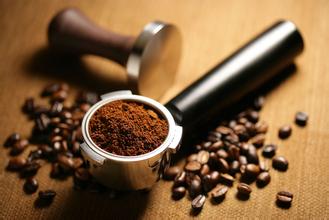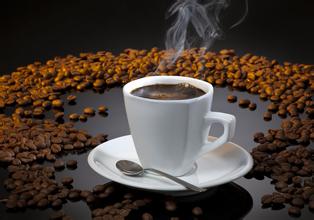How many coffee beans are there in a coffee tree?
How many coffee beans are there in a coffee tree?
At the beginning of the 20th century, overseas Chinese brought coffee back from Malaysia to grow in Hainan Province. Later, tropical and subtropical provinces in the south began to grow plant coffee one after another. Although the cultivation time is short, the coffee from Hainan and Yunnan provinces in China has excellent quality and unique charm, so it enjoys a high reputation in the world. After some foreign businessmen buy it at a low price, it is processed and sold to the international market. It has become an expensive world-class drink, especially the small-grain coffee grown in Yunnan Province. Because of the large temperature difference between day and night in Yunnan, it is conducive to the accumulation of substances in it. Therefore, it tastes strong but not bitter, fragrant but not strong, oily and fruity, so it is praised as "the best quality coffee in the world" by coffee merchants at home and abroad.
Dry type, the operation is relatively simple, the harvested fruit will be spread on the dry ground and basked in the sun for a week or two. The sound of rattling can be heard when it is turned, which means it is dry. Then use the sheller to remove the pulp, endocarp and silver skin of the dried fruit.
This method gives coffee beans a soft sour taste and a mild bitter taste. This method is used in Brazil, Ethiopia, Yemen and other places. Disadvantages: vulnerable to weather, defective beans and foreign bodies are more likely to mix. Therefore, it is necessary to select it carefully before delivery.
In the washing type, the harvested fruit is poured into the sink, the floating matter is removed, the fruit in the water is moved to the pulp removal machine, the skin and pulp are removed, and then put back into the tank to remove the floating matter, the "core" in the water is poured into the fermentation tank, soaked for half a day or one day, the colloid on the surface of the fermented bean is removed, washed, dried or mechanically dried, and the endocarp is removed on the peeling machine to become commercial raw coffee beans.
The advantages of washing type: coffee beans have good luster, less foreign bodies, and slightly better sour taste. Colombia, Mexico, Guatemala and other countries have adopted this method. Coffee beans produced by washing account for almost 70% of the total output of coffee beans.
Sometimes poor treatment of fermentation time will produce fermentation odor and special sour taste; if handled well, it can form the personalized aroma of coffee beans. At this time, the coffee beans can be sent to various places in sacks or in special containers.
The ripe coffee berries look like cherries and are bright red with sweet flesh and contain a pair of seeds, namely coffee beans (Coffee Beans). Coffee varieties can be divided into small-grain, medium-grain and large-grain species, the former contains low caffeine content and strong flavor, while the latter two have high caffeine content but poor flavor. Coffee sold in the world is generally made of small and medium seeds in different proportions, usually 70% of medium seeds, mainly caffeine, and 30% of small seeds, mainly for their aroma. Each coffee variety generally has a few to a dozen variants. Coffee is more resistant to shade and cold, but not resistant to light, drought and disease. Coffee contains nine kinds of nutrients, such as caffeine, protein, crude fat, crude fiber and sucrose. As a beverage, coffee is not only mellow and delicious, slightly bitter and sweet, but also can excite nerves and dispel fatigue. In medicine, caffeine can be used as an anesthetic, stimulant, diuretic and cardiotonic, as well as to help digestion and promote metabolism. The pulp of coffee is rich in sugar and can be used to make sugar and alcohol. Coffee flowers contain essential oils, which can extract high-grade spices.

Important Notice :
前街咖啡 FrontStreet Coffee has moved to new addredd:
FrontStreet Coffee Address: 315,Donghua East Road,GuangZhou
Tel:020 38364473
- Prev

Rich taste Starbucks Uganda coffee bean grinding scale variety production area treatment method
Rich taste Starbucks Uganda coffee bean grinding scale variety production regional treatment method Starbucks coffee NO.5 espresso Espresso Starbucks coffee NO.10 iced caramel macchiato Iced Caramel Macchiato this is Starbucks's original coffee, espresso, milk, vanilla syrup and ice cubes are natural, and it is covered with caramel sauce pattern macchiato
- Next

Double spaghetti concentrate and 150 milliliters of milk.-how many milliliters of spaghetti concentrate?
Double spaghetti concentrate with 150 milliliters of milk-one spaghetti concentrate how many milliliters is suggested: 1. Dark chocolate, which is a perfect match for kung fu coffee, is a classic match in many cafes. two。 Listening to Chopin Mazuka and drinking this kind of espresso is not suitable for listening to more lively pop music. A quiet piano is very harmonious. Double espresso double
Related
- What brand of black coffee is the most authentic and delicious? what are the characteristics of the flavor of the authentic Rose Summer Black Coffee?
- Introduction to the principle and characteristics of the correct use of mocha pot A detailed course of mocha pot brewing coffee is described in five steps.
- Which is better, decaf or regular coffee? how is decaf made?
- How much is a bag of four cat coffee?
- How about four Cat Coffee or Nestle Coffee? why is it a cheap scam?
- Which is better, Yunnan four Cats Coffee or Nestle Coffee? How about cat coffee? is it a fake scam? why is it so cheap?
- How about Cat Coffee? what grade is a hoax? which instant coffee tastes better, four Cat Coffee, Nestle Coffee or G7 coffee?
- Process flow chart of coffee making-Starbucks coffee making process what coffee tastes good at Starbucks
- The top ten best coffee beans in the world Rose summer coffee or Tanzanian coffee tastes good
- Yunnan four cat coffee is good to drink?_four cat coffee is a big brand? four cat blue mountain coffee is fake?

